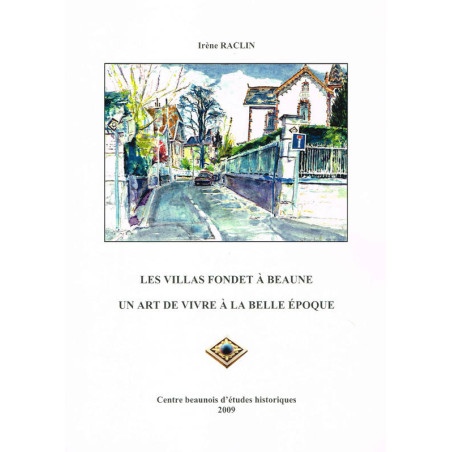



In Beaune, a dozen houses located in the "Allée des Villas Fondet" offer the pleasant face of polychrome facades and roofs decorated with terracotta lace... Of course, these Belle Époque constructions are not uncommon in France, nor outside our borders: in seaside towns, a whole avenue sometimes still declines, in a more extravagant mode, the colourful coquetry of these old ladies...
Visa, MasterCard, Amex, Paypal or 3 times, interest-free with Scalapay

0.01€ from 35€ of purchase in France and from 99€ throughout Europe

Delivery in France and around the world at home, at office or in a pickup point

In Beaune, a dozen houses located in the "Allée des Villas Fondet" offer the pleasant face of polychrome facades and roofs decorated with terracotta lace... Of course, these Belle Époque constructions are not uncommon in France, nor outside our borders: in seaside towns, a whole avenue sometimes still declines, in a more extravagant mode, the colourful coquetry of these old ladies...
But in Beaune more than anywhere else, they display a family resemblance that harks back to Verlaine's "familiar dream": like the ideal woman for the poet, the bourgeois villa is "neither quite the same nor quite another each time". What, then, is the secret of the small residential district indicated by a surname that has become enigmatic, even in Beaune?
As for the muse who inspired the builder of the Villas, she is never mentioned. However, under the same name, we must read a double signature, the intimate cooperation of the spouses having taken the place of the inevitable collaboration between architect and ceramist for this type of house.
Going back to the origin of the couple's fortune for such an ambitious project allows us to discover the social elite to which Camille Fondet belonged. But after having exploited vineyards and quarries in Remigny, did he not above all break with the lifestyle of his ancestors, nobles or bourgeois, all of whom remained "owners" in the countryside?
The rich personality of the prominent man from Beaune is revealed in depth by two fictions with a strong autobiographical content: like his father, Camille Fondet gave his thoughts to writing, with the secret desire to promote values to which he was attached throughout his life.
But, more than his literary attempts, it is his "Belle Époque villas" that still charm us, particularly with their vast repertoire of architectural ceramics produced by Perrusson and masterfully implemented by Eugénie Fondet.
This study, both historical and architectural, invites us to rediscover the creative dynamism of the once prestigious Tuileries of the Saône-et-Loire, through a fragile heritage of the decorative arts, which nevertheless remains one of the most expressive testimonies of a taste and an art of living that are forever gone.
Data sheet